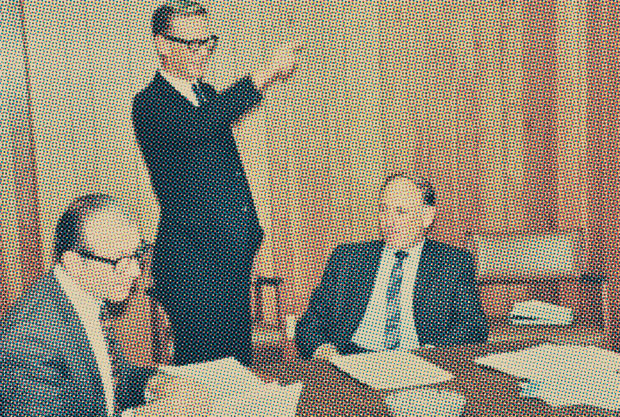BY AMY MILSHTEIN
Meetings get a bad rap. A few local companies make them count.

BY AMY MILSHTEIN
I was talking to a friend about the nature of modern work, specifically how all-encompassing it is, with today’s executives, managers and professionals logging in 10, 12, even 14 hours per day.
“That’s crazy,” he said. “I work six to eight hours a day.”
Huh? My friend, Andrew Berkowitz, is the chief product officer of Boulder, Colo.-based TeamSnap, a company that makes team management software. Everyone knows Chief Anything Officers put in the long hours. What’s his secret? “We don’t have pointless meetings,” he explained.
Ahhh, the pointless meeting. Much has been written about this beast and how to tame it. Solutions range from the obvious (start on time, stick to the agenda) to the innovative (use technology, have a walking meeting) to the downright uncomfortable (remove the chairs, lower the thermostat). Yet despite these breakthroughs, the burdensome, inefficient meeting remains a top complaint, postponing real work and costing time and money, because that’s the way they’ve always been done and no one knows why.
“Many companies I work with schedule a weekly meeting, and when I ask its purpose, I’m met with a blank stare,” says Rick Thomas, principal and business advisor for Portland-based Pilot Wealth Management. He says this phenomenon is particularly common in the service industry, where ongoing maintenance meetings are the norm.
“Often these weekly meetings contain staff updates, which could easily be communicated another way, or information everyone already knows because they’ve read long email threads about it throughout the week.”
A better use of technology promises to change the meeting as we know it. There are plenty of e-communication options that allow messaging, file sharing, hangouts and chats. “Five people in a chat room can hash out a problem effectively while working on other projects,” says Berkowitz.
TeamSnap is a distributed company, with 60 employees around the country. So of course they rely heavily on e-meeting tools. Berkowitz, who works from his home in Vancouver, Wash., admits that the technology is not yet perfected, but that often works to the meeting’s favor. “There’s always a time lag in video meetings, and that forces people to pay attention and wait their turn to speak,” he says.
Most meetings in tech companies are project driven, according to Thomas, which keeps them from wandering into the weeds. Still, tech and service-industry meetings should follow these common-sense rules to making meetings better: Start and end on time, follow an agenda, identify and assign actionable items and, perhaps most important, limit the invite list to necessary staff members only.
Is that all there is to it? Define your agenda and start on time? Of course not. Successful companies have more than that. There’s a buzz, a bonding, a je ne sais quoi that keeps employees engaged and excited. Generating that kind of mojo requires a different sort of meeting — one that is less about action and more about connection. “Any new team needs at least 16 hours of face time — where they are not talking about work — before they become effective,” says Thomas.
MIT research reported in the Harvard Business Review two years ago corroborates this. A recent study of various groups such as call center and bank employees found the best predictors of productivity were a team’s energy and engagement outside formal meetings.
Joaquin Lippincott, the president of Metal Toad Media, a Portland-based company that provides web consulting and implementation, understands this concept.
“Every Monday and Thursday, we have a company-wide stand-up meeting where we touch on an agenda. But it’s mostly to give high-fives,” he says. High fives? “It’s where we engage in individual connections, mention people who’ve helped out on a project, get the whole company excited and aware about things.”
With 45 employees in Portland, Lippincott admits that the high five meeting is getting a bit unwieldy and may have to be broken up into teams. Still, he doesn’t imagine it ever going away. “We are open to new strategies and technologies and will stick with what works,” he says.“But face-to-face meetings are never going away. People getting together in a room, breaking bread and talking is an essential part of being human.”
So go ahead and book that conference room, take a brisk walk-and-talk or log into a video chat. We meet, therefore, we are. And sometimes there’s bagels.


